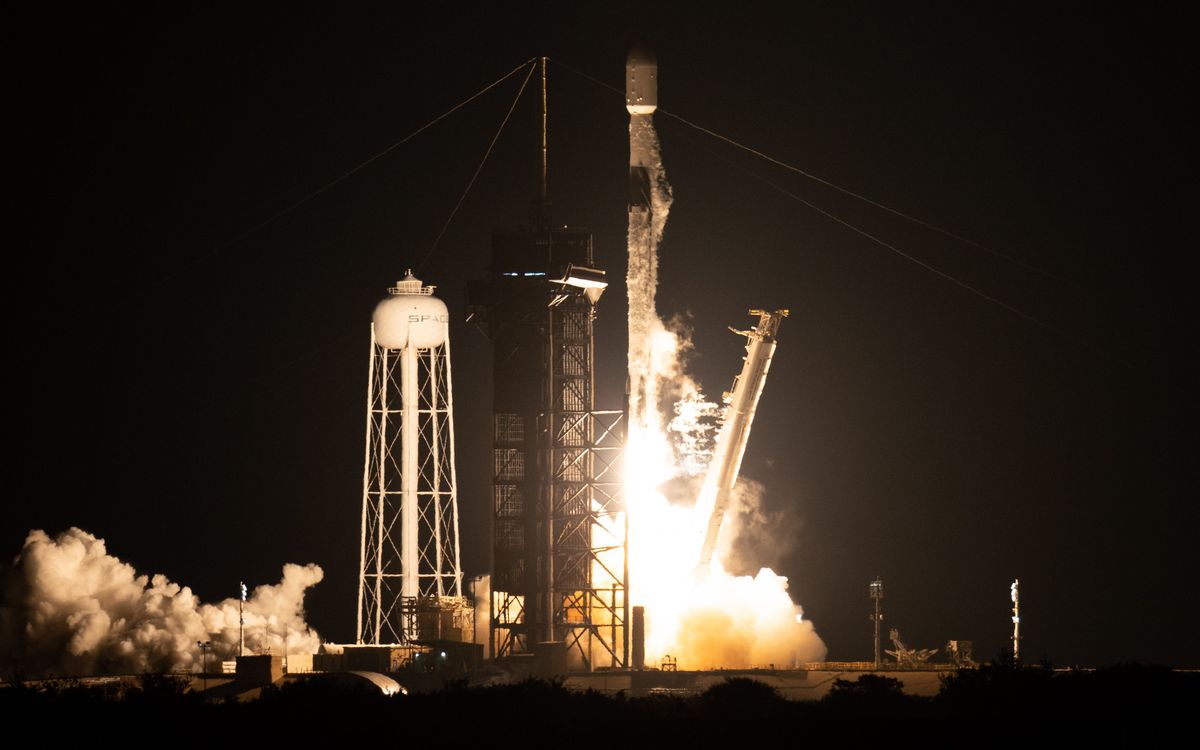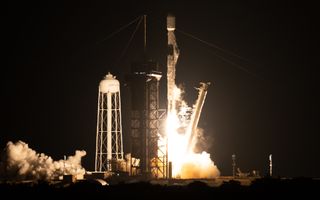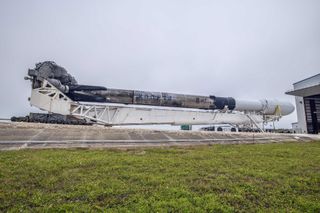[ad_1]
CAP CANAVERAL, Fla .– SpaceX successfully launched its 28th rocket of the year early Thursday morning (December 9), carrying an X-ray observatory into space for NASA.
A used Falcon 9 rocket lifted off at 1:00 a.m. (06:00 GMT) from Pad 39A here at NASA’s Kennedy Space Center in Florida, carrying the Imaging X-ray Polarimetry Explorer (IXPE). The mission marked the fifth flight for this particular booster.
“Falcon 9 and IXPE take off, a new set of x-ray eyes to see the mysteries of our skies,†NASA TV launch commentator Derrol Nail said during a live webcast of the launch.
Related: Our X-Ray Universe: Amazing Photos From NASA’s Chandra X-Ray Observatory
The IXPE satellite, which is roughly the size of a refrigerator, is a $ 214 million mission that aims to probe the physics behind some of the universe’s most dynamic objects: black holes and neutron stars . Astronomers hope that this satellite will be a new tool at their disposal to probe the mysteries of the universe.
Equipped with three identical telescopes, IXPE will study the polarization of light (i.e. how a light wave oscillates in relation to the direction of the wave) from some of the most spectacular cosmic sources in the universe. Astronomers will be able to refine the structure and study the mechanisms that power these types of enigmatic cosmic objects.
“What polarization tells us depends on the source,” Martin Weisskopf, IXPE principal investigator told Space.com in a pre-launch press conference on December 7. “Black holes, for example, don’t have a lot of properties, but you can measure the spin by looking at the change in the polarimetry of the x-rays emanating from these sources.”
IXPE will join the ranks of other NASA X-ray observing satellites, such as the Chandra Space Telescope, which orbits much higher than IXPE. Chandra is an imaging satellite that takes nice photos of x-ray sources, while IXPE will focus only on the polarimetry of light.
Its first target will be the Crab Nebula, which is the remnant of a dead star. IXPE is designed to watch very spectacular targets, and the remnants of a stellar explosion are the perfect subject to begin with. Weisskopf explained in a pre-launch press conference on December 7 that inside the Crab Nebula is a pulsating beacon similar to a lighthouse, which is actually the corpse of the star that created the nebula.
The polarimetry of the light emanating from the pulsar has been measured before but not in this detail.
Related: SpaceX’s most flown Falcon 9 rocket is a soot veteran after 10 launches and landings (photos)
Thursday’s flight also marks the second rocket launch from Cape Canaveral this week. Early Tuesday morning (December 7), an Atlas V rocket lifted off from an adjacent launch pad, carrying a mix of payloads into space for the U.S. government.
This veteran launcher, called B1061, carried eight astronauts into space as part of NASA’s first two long-duration missions (Crew-1 and Crew-2), a total of three different Dragon spacecraft, including one mission freighter in August, and a broadband satellite for Sirius XM.
Thursday’s pre-dawn flight marks the 131st overall flight of a Falcon 9 and the 28th Falcon 9 to fly in 2021. That breaks SpaceX’s record for the most rockets launched in a single year – the company in launched 26 in 2020 – with two more launches on the schedule before the end of this year.
After a successful takeoff, the first stage of the rocket landed on one of the company’s three massive drones, which serve as floating landing pads. Named “Just Read the Instructions”, the drone was waiting in the Atlantic Ocean to grab the booster and bring it back to port to fly again.
The IXPE satellite is the smallest dedicated payload to fly on a SpaceX Falcon 9 rocket. Originally intended to fly on a Pegasus rocket, the refrigerator-sized satellite has changed launcher, saving NASA a few savings. million dollars on the price.
The mission is the 98th launch hosted by NASA’s Launch Services Program (LSP) since its inception in 1998, and the fifth LSP launch for SpaceX. It is also the first LSP launch to take off from NASA’s historic Pad 39A.
“We are delighted to play a very small role in this incredible science mission,” Tim Dunn, director of NASA’s LSP, which associates payloads with rocket launchers, told Space.com. “This is our fifth mission to board a Falcon 9 and the first to take off from NASA property.”
Dunn told Space.com that LSP typically allows the launch vendor to choose which launch pad a mission is launched from if the company has multiple options, but in this case the Pad 39A was the perfect match. This is because it has an ideal water suppression system that will help mitigate the effects of rocket launch, helping to keep the IXPE satellite safe on its way to orbit.
Dunn, along with Juliana Scheiman, director of civilian satellite missions for SpaceX, said the orbit envisioned by IXPE really puts the Falcon 9 to the test. Indeed, IXPE must fly over the equator, in a lower orbit, to protect itself from the excessive exposure to the radiation that it would receive in higher orbits and to be closer to the ground stations with which it will communicate. To this end, it must perform a “dog-leg” maneuver, which means it must change orbital plane after launch, going from an inclination of 28.5 degrees to an equatorial orbit of 0.2 degrees. .
The landing marked the fifth successful landing for this particular booster and the 97th overall landing of a Falcon 9 rocket since 2015. In addition to recovering the first stage of the rocket, SpaceX will also recover the payload fairings (aka the rocket nose cone) that protect the payload when the rocket takes off into the atmosphere.
One of SpaceX’s salvage ships will rip the fairings out of the ocean so they can be brought back to port, refurbished, and stolen again.
The next step for SpaceX is the launch of a communications satellite for Turkey as well as a cargo resupply mission for NASA. These launches are slated to kick off on December 18 and 21, respectively, to cap off a busy month here on the Space Coast.
Follow Amy Thompson on Twitter @astrogingersnap. Follow us on twitter @Spacedotcom Where Facebook.
[ad_2]





